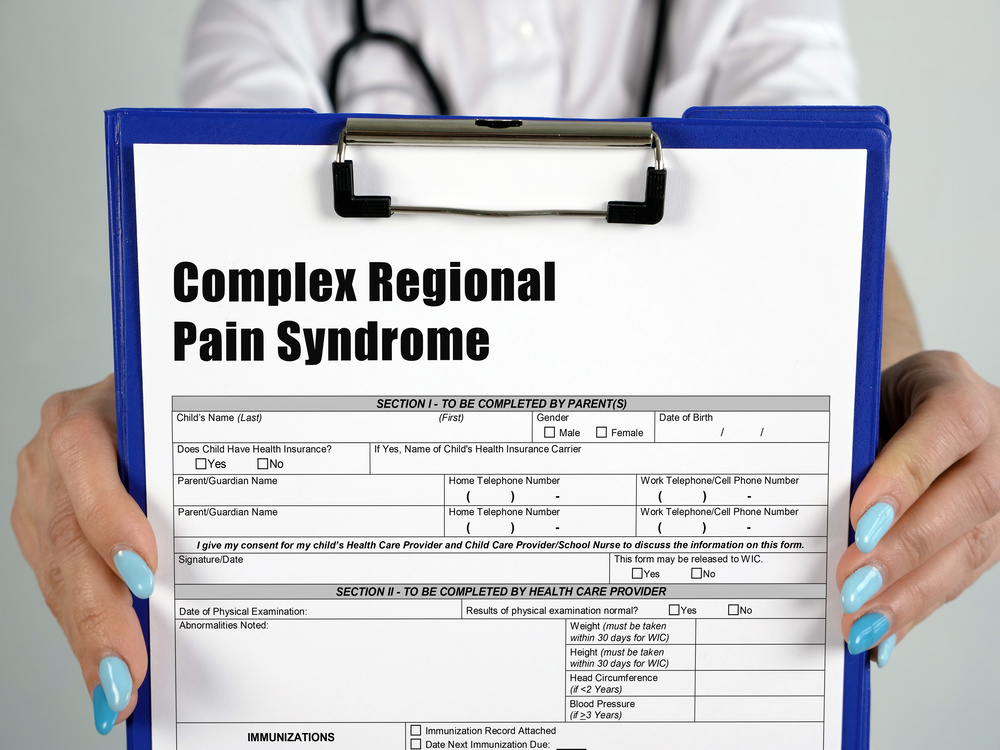
24 Jun Complex Regional Pain Syndrome: A Tough Nut to Crack
Pain management doctors are familiar with all sorts of chronic pain and related conditions. We are intimately familiar with chronic back pain. We routinely work with patients experiencing pain in the neck, shoulders, chest, hips, and legs. We also deal with one of the toughest nuts to crack in all pain medicine: complex regional pain syndrome (CRPS).
As many as 200,000 American adults are living with CRPS at any given time. Such small numbers make it a comparatively rare condition. And yet, it can be debilitating in the most serious cases. The good news is that about three quarters of those who experience the condition eventually return to normal health. Only about 25% are left with a permanent disability.
More About the Condition
CRPS is considered a nervous system disorder. It is most often a chronic condition that manifests itself in severe and persistent pain as the result of a previous injury or medical procedure. Its main characteristic is that the resulting pain is disproportionate in severity to the event that triggered it.
Most cases of CRPS develop following an injury, a surgical procedure, or a medical episode involving something like a heart attack or stroke. We expect pain as a result of all such things. But a person experiencing CRPS reports disproportionately severe pain that lasts longer than would otherwise be expected.
One last thing to note is that CRPS mainly affects limbs. Although there are exceptions to the rule, it is typical for pain to manifest itself in arms and legs.
The Symptoms of CRPS
How would a doctor diagnose CRPS as opposed to normally expected pain? By considering a patient’s symptoms. Here is what a pain doctor would look for:
- Complaints of a continuous throbbing pain.
- Additional complaints of a burning pain.
- Changes in skin temperature and color.
- Inflammation at the site of the pain.
- Sensitivity to cold and touch.
Other symptoms can include joint stiffness, muscle spasms, excessive perspiration, limb weakness, and even changes in hair and nail growth. These are all less common symptoms but still possibilities, nonetheless.
Once again, the clincher is that the person’s report of pain suggests that its severity and longevity are disproportionate to whatever event triggered it. In terms of measuring severity, pain doctors need to rely on patient reports compared to several different pain scales they are trained to utilize.
How CRPS Is Treated
As you might expect, there is no cure for CRPS. Indeed, medical science isn’t even quite sure of its mechanisms. The best we pain doctors can do is offer treatments designed to relieve symptoms until the body heals itself. Limited evidence does seem to suggest that early intervention offers the best chances of complete pain remission.
Pain doctors often recommend medication-based treatments. Interventional procedures, psychotherapy, and ongoing psychological support can help in some cases. Here at Lone Star Pain Medicine, we offer a few additional treatments patients may not have access to through their GPs. Examples include:
- Caudal steroid injections.
- Celiac plexus blocks.
- Cervical epidural steroid injections.
- Lumbar sympathetic blocks.
- Lumbar transforaminal epidural steroid injections.
- Stellate ganglion blocks.
- Spinal cord stimulation.
It would be impossible for us to recommend a particular treatment in a single blog post. However, the Lone Star team would be happy to meet with you to discuss how we can help you feel better.
It is fortunate that the vast majority of CRPS sufferers return to normal health. Though it does take time, most cases of CRPS do eventually resolve. If you believe you are experiencing CRPS pain, please visit us at Lone Star Pain Medicine.


Sorry, the comment form is closed at this time.